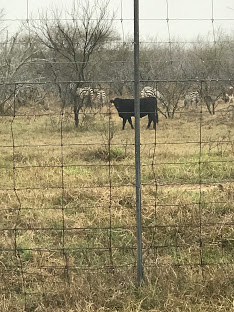Hello, friends! Time to look back and see what progress I made on my March focus items.
March Progress
Zero-Waste Lifestyle
- (+) Read “Sustainability Made Simple: Small Changes for Big Impact” — Done! This was an excellent introduction to sustainability—very digestible and loaded with small changes you can make today. If anyone’s interested in learning about sustainability, I highly recommend starting with this book.
- (+) Watch two more Climate Lab videos (#3 and #4). — I’ve been enjoying these videos and also recommend them!
Yoga/Pilates/Hamstring Stretching
As planned, I totally let this slide this month. I did start listening to a Forever Fused podcast during the month and now follow Forever Fused on Instagram. There Julie Wilkins often posts videos of different stretches she’s doing, which sparks me to try them too.
Art Journal Regularly
- (+) Create a day-marker page for 20+ days of the month. — More than 20 pages! I even made one each day on hitch, both hitches. Still so fun!
- (+) Read two more chapters of the art journaling PDF I have. — I hadn’t done this all month, then pulled up the e-book just now and finished reading the whole thing. I’m excited to play around with more materials when I’m back in Wisconsin.
Create One Bigger “Thing” Quarterly
- (+) Write the PDF’s conclusion
- (+) Write the PDF’s introduction
I’m so happy with the progress I made on my “mini” e-book this month! I went to the library often on off days and worked on it from the apartment too. All that’s left to do is come up with a title for this e-book and then make a cover page. That’s it! Everything else is written, edited, and formatted—91 pages. I’ll be sharing it here soon!
Bits and Pieces: Poetry
- (+) Read a poem per day (track in bullet journal). — This was great!
April Focus
Since I’ll be in Wisconsin for the month of April, my priorities are going to mold to fit the environment. I’ll be able to use Wi-Fi every day for my Adapted Yoga videos, so daily yoga is #1. I might be building a deck in our backyard as well (we’ll see…), plus I have some personal projects I’ll be working on. And of course, I’ll try to see as many friends and family as I can throughout the month, too.
Zero-Waste Lifestyle
- Read one sustainability book. (I put two sustainability books on hold at the local library. When I pick them up next week, I’ll choose which one to read for this list item.)
- Watch two more Climate Lab videos (#5 and #6).
Yoga/Pilates/Hamstring Stretching
- Yoga every day (from the 4th onward) and track in bullet journal.
- One minute plank (x3: straight, left, right) each day. — My PT recommended I do this last June. I was good about it for July and August, until I moved to Arizona. I’d like to return some focus to my core this month.
Art Journal Regularly
- Create a day-marker page for 20+ days of the month.
Create One Bigger “Thing” Quarterly
- Publish IBS Story
- Weekday 30-min. writing sessions for my next quarterly “thing”
Bits and Pieces
Finally, there are lots of other bits and pieces that will have my attention this month, so I wanted to list some here.
- Weekly pushups. On my first hitch this month, a crew leader did 1,000 push-ups during the 8-days of hitch. Not having done push-ups in forever, I was curious if I could even do one, so I tried it one day. Four! On my second hitch this month I did push-ups every morning. First I’d do four real push-ups, then ten on my knees. One day I was able to do five real ones first. So this month I want to try out this beginner routine to see how high I can build it. Also, since I won’t be working as I usually do on hitch, I don’t want to lose the muscle I’ve gained in ACE.
- Deck Swap. I signed up for the International Card Deck Swap last month, which I’m so excited for! This means I’ll have the month of April to decorate 54 playing cards and then mail them to the project organizer. Sometime this summer I’ll receive back a full deck of 52 handmade cards, each crafted by someone different.
- Ukulele. I’ll be reunited with my ukulele when I get to Wisconsin, so I want to play often and learn as many songs as I can. I’m planning to take it with me to my summer/fall conservation gig in Colorado, so I’ll also be putting together a small booklet of songs/lyrics/chords so that I can play on-the-go.
- Five portraits. I want to finish at least five portraits this month for my 100 Portraits project. I only did two in March, and I should certainly have the time to crank out some more.
I feel like I consistently overestimate what I can do when spending several weeks at home, as the unplanned always arises—but most of this feels attainable at the moment. We’ll see how it goes!
As always, I’d love to hear from you! What went well for you in March? Where would you like your attention to be during April?



















